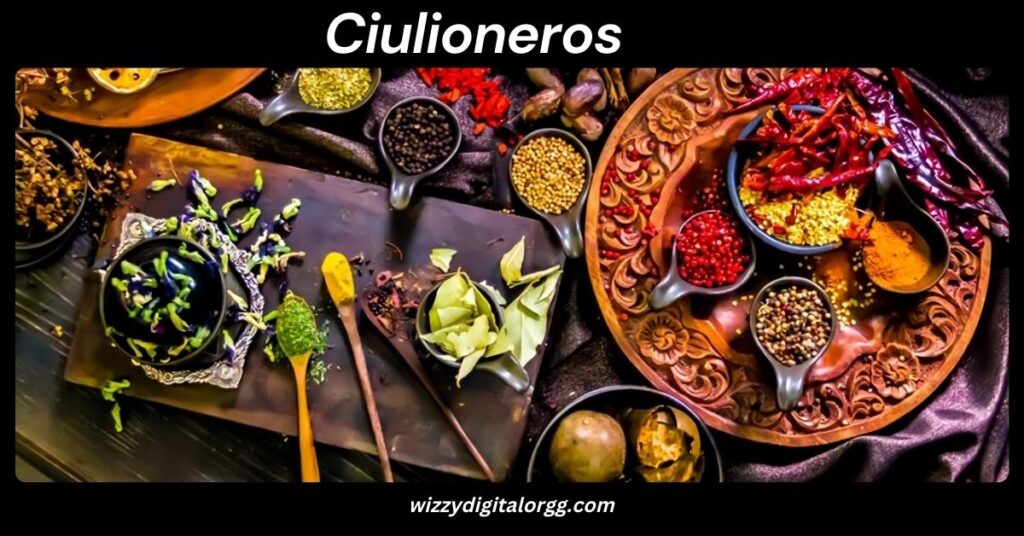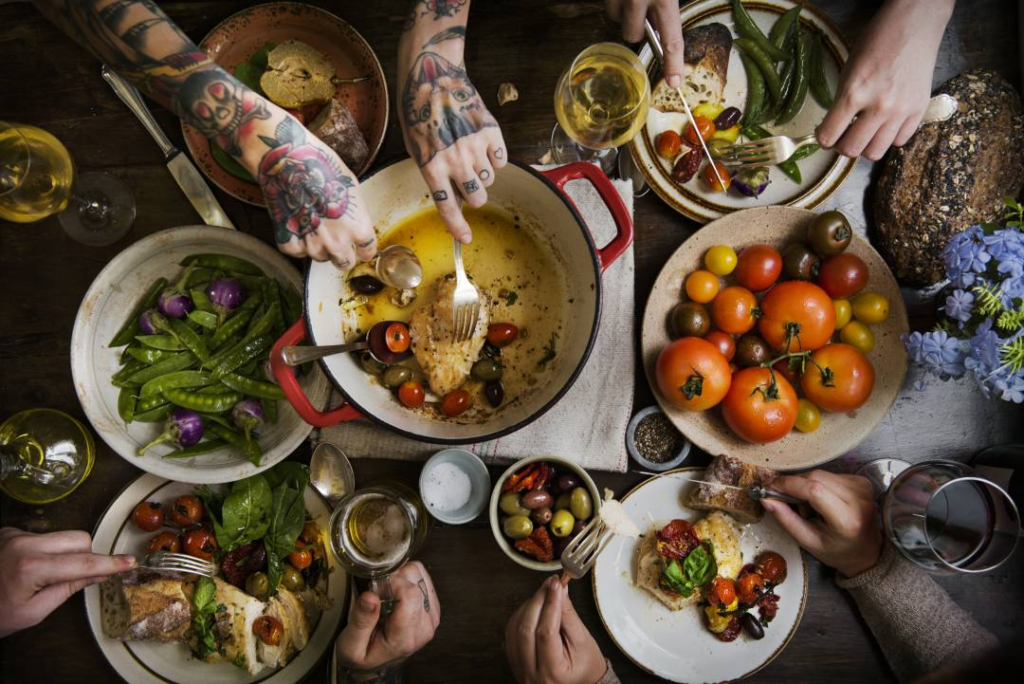
Ciulioneros is a fascinating culinary tradition that blends earthy flavors, wild-grown ingredients, and cooking techniques passed down through generations. With its deep cultural roots, this cuisine is a true reflection of its community and history. If you’re a food enthusiast or simply looking to learn more about the diverse world of global cuisines, understanding Ciulioneros will open your eyes to a vibrant and unique way of cooking. This article will explore everything about Ciulioneros – from its origins to its distinct dishes, key ingredients, and much more.
The Origins of Ciulioneros Cuisine
Ciulioneros has deep historical and cultural significance. Originating from a specific community known for its harmonious relationship with nature, Ciulioneros chefs rely on wild-grown and foraged ingredients that are native to the region. This tradition not only emphasizes sustainability but also celebrates the richness of the natural world. The essence of Ciulioneros lies in its connection to the land, with recipes that have been perfected over centuries.
The roots of this cuisine can be traced to the blend of indigenous practices and early settlers’ culinary traditions. The word “Ciulioneros” itself is a reference to the people and their culture, which has evolved into a distinct food culture that is both ancient and contemporary in its form.

Key Ingredients in Ciulioneros Cuisine
The foundation of Ciulioneros is built on wild-grown ingredients. Many of these ingredients are foraged from the surrounding natural landscapes, adding a fresh and earthy element to each dish. Here are some key ingredients that define Ciulioneros cooking:
- Wild Herbs and Plants: A staple in Ciulioneros cuisine, wild herbs such as wild thyme, rosemary, and sage are often used to season dishes, infusing them with aromatic flavors that are both earthy and refreshing.
- Mushrooms: Wild mushrooms, including varieties such as chanterelles and porcini, play an important role in Ciulioneros cuisine. They add depth to sauces, stews, and soups, offering earthy and umami-rich notes.
- Game Meat: Traditional meats such as venison, rabbit, and wild boar are common in Ciulioneros dishes. These meats are often slow-cooked or roasted, preserving their natural flavors.
- Berries and Fruits: Berries like cranberries and elderberries, as well as fruits such as apples and pears, are frequently incorporated into desserts and sauces, adding a touch of sweetness that balances the savory components of many meals.
- Root Vegetables: Root vegetables such as carrots, turnips, and parsnips are commonly used in soups and stews, providing warmth and heartiness to the dishes.
Also Read: Banggiadag: A Comprehensive Exploration of Resilience, Growth, and Community
Traditional Dishes in Ciulioneros Cuisine
Ciulioneros offers an array of traditional dishes that showcase the versatility of its ingredients. These meals are crafted with time-honored techniques that reflect the culture’s respect for both its history and its environment.
- Ciulioneros Stew: A hearty and rich stew, often made with wild game such as venison, wild mushrooms, and root vegetables. Slow-cooked to perfection, this dish embodies the essence of Ciulioneros cuisine.
- Foraged Herb Soup: This soup blends wild herbs with seasonal vegetables, creating a flavorful, earthy base. It’s often served as a starter, warming the body and preparing the palate for the main courses.
- Roasted Game Meat: Roasting game meat over an open flame is a signature cooking method. Venison or rabbit, seasoned with wild herbs, are slow-cooked until they are tender, juicy, and packed with flavor.
- Wild Berry Compote: A traditional dessert made from wild-foraged berries, sugar, and spices, this compote is often served over a rich, creamy custard or used as a topping for cakes.
- Ciulioneros Bread: Made from grains that are locally sourced, Ciulioneros bread is typically dense and hearty. It’s often paired with stews or used to dip into sauces and gravies.
The Cooking Techniques of Ciulioneros Cuisine
Ciulioneros cooking is unique in its methods, often emphasizing slow cooking and deep, rich flavors. Below are some of the techniques that make Ciulioneros dishes so special:
- Slow Roasting: Roasting game meat over an open fire or in a slow-cooking oven is a common practice. This method locks in natural flavors and creates a tender, succulent dish.
- Foraging: Gathering wild herbs, mushrooms, and berries from the surrounding landscape is a key part of Ciulioneros cuisine. This not only ensures freshness but also helps maintain a close connection to nature.
- Fermentation: Fermentation is used for preserving ingredients such as vegetables, fruits, and dairy. It’s a time-honored tradition that allows cooks to enjoy seasonal ingredients all year round.
- Wood-Fired Cooking: Utilizing wood-fired ovens or stoves imparts a unique smoky flavor to dishes. This technique enhances the earthiness of meats, vegetables, and even bread, adding complexity to the flavors.
- Stone Grinding: Grains, nuts, and seeds are often ground using stones, a technique that preserves the integrity of the ingredients. This practice adds texture to the dishes and enhances their natural flavors.
Ciulioneros in the Modern World
While rooted in tradition, Ciulioneros is also evolving to meet the tastes of modern consumers. Chefs today are blending old-world techniques with new culinary innovations, creating fusion dishes that stay true to the core values of Ciulioneros cooking while appealing to contemporary palates.
Also Read: Tasyyblack: A Culinary Journey Blending Tradition and Innovation
From the rise of farm-to-table dining to the growing popularity of wild-foraged ingredients, Ciulioneros is experiencing a renaissance. More restaurants are now incorporating wild-grown ingredients into their menus, offering a fresh take on this ancient cuisine. With an increasing global interest in sustainability and local sourcing, Ciulioneros is poised to grow in popularity in the coming years.
How to Incorporate Ciulioneros into Your Own Cooking
If you’re eager to try your hand at Ciulioneros cuisine, there are several simple ways to bring these unique flavors into your kitchen:
- Use Wild Herbs: Incorporate wild herbs like rosemary, thyme, and sage into your everyday cooking. Add them to stews, soups, or roasted meats for an aromatic, earthy flavor.
- Experiment with Game Meat: If available, try cooking with game meats like venison or rabbit. These meats are a great source of lean protein and can be prepared in a variety of ways, from slow-roasting to braising.
- Forage for Local Ingredients: If you live in an area where foraging is possible, take a walk in the woods or fields and gather wild herbs, mushrooms, and berries. Incorporating these ingredients into your cooking will bring an authentic touch of Ciulioneros to your dishes.
- Make Homemade Bread: Try baking a hearty bread made from locally sourced grains. Serve it alongside your favorite stew or soup for a fulfilling meal.
- Preserve Seasonal Ingredients: Try fermenting or pickling vegetables and fruits in order to preserve them for use throughout the year. This traditional technique not only extends the life of your ingredients but also adds a unique depth of flavor.
Also Read: Blazertje: A Stylish Wardrobe Staple for Modern Fashion
Frequently Asked Questions About Ciulioneros Cuisine
What is the main characteristic of Ciulioneros cuisine?
Ciulioneros is defined by its use of wild-grown ingredients and traditional cooking techniques. It emphasizes sustainability, local sourcing, and a deep connection to nature.
Can I try Ciulioneros cooking at home?
Yes! By using wild herbs, foraged ingredients, and game meat, you can easily bring the flavors of Ciulioneros into your kitchen. Start with simple dishes like herb-infused soups or roasted game meat.
Where can I find authentic Ciulioneros dishes?
While Ciulioneros is deeply rooted in a particular region, many modern restaurants are embracing the use of wild ingredients. Look for farm-to-table establishments or specialty dining experiences focused on local, sustainable foods.
Is Ciulioneros suitable for vegetarians?
While Ciulioneros traditionally focuses on game meats, there are plenty of vegetarian options, such as foraged herb soups, wild mushroom dishes, and root vegetable-based stews.
Conclusion
Ciulioneros is a unique and rich food tradition that celebrates wild-grown ingredients, sustainable practices, and ancient cooking techniques. Whether you’re an adventurous eater or a curious cook, this cuisine offers a taste of something truly special. By embracing the flavors of Ciulioneros, you can explore the world through the lens of nature, tradition, and craftsmanship.



